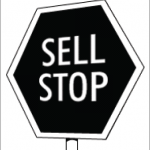 During the recent correction, reader Kathy was stopped out of her international position based on her 7% trailing sell stop. With the markets having rebounded, she obviously experienced a whipsaw signal. This was her comment:
During the recent correction, reader Kathy was stopped out of her international position based on her 7% trailing sell stop. With the markets having rebounded, she obviously experienced a whipsaw signal. This was her comment:
I was sell-stopped out of my 403B International Fund last week. My high was 21.27 so 7% would be 19.78. Since I can only commit to buy/sell before noon, I did so on 3/16 and sold at 19.55 (I paid 19.33).
So, once again I am at a loss as to when I get back in when you have not set a sell signal on the international. In the future, I could wait till you set the signal but I could be down 10% of more. Is there a reason to do one or other or just a personal risk tolerance? I could be out of international for years depending on what happens and that does not seem like the right approach.
The use of stop losses is not an exact science. You did everything by the book and simply experienced a whip-saw signal. There are 3 things you can do:
1. You can stay out of the market, or re-invest in another arena where the trend has remained up.
2. If you are conservative, you can wait and re-enter the same position as soon as its old high has been taken out. That would be confirmation that the trend has resumed and upward momentum has been restored.
3. However, using suggestion 2 may take some time and you will be buying near the top. If you are a little more aggressive, you could repurchase that international fund as soon as it has moved 2% above the price you got stopped out of.
In your example, you sold at 19.55 and could consider re-entering at 19.94. While that is not a guarantee that upward momentum will continue, at least it will signal a turnaround from the pullback that caused the sell stop to be triggered.
Again, using sell stops has its rewards, especially if the markets continue their downward swing. In your case, at least so far, it turned out to be a temporary pullback.
This was a hot topic on my blog about a year ago, and I have compiled the most relevant reader Q & As in a free e-book titled “(Almost) Everything You Wanted To Know About Sell Stops …But Were Afraid To Ask.”
In case you missed it, you can download your copy here.
Contact Ulli
Comments 5
review. But going back through all the blogs looking for related posts is, simply, a hassle. You’ve just taken away a lot of the drudgery and demonstrated, again, why the service you offer small investors is so good! Not sure about the direction of the website, though. Maybe I’m just spoiled and have enjoyed the lack of advertisers/sponsors and commercialization, like that found on other websites, for too long. Well, that’s just business, I suppose. Anyway, thanks again for your insights and commentary. Mike
7% is a lot to give up…if you are stopped out at 7% the market is in a serious correction or worse yet, a change in direction. I prefer a closer stop to preserve profits. It’s more work but it can be more rewarding with 3x ETF’s or index options. There are a number of technical indicators to help manage your re-entry.
Here is one way to re-enter the market:
Verify Bullish Trend: use a smart money indicator or use 39 week moving avg.
Wait for the Relative Strength Indicator (RSI) to rise above the 30 range.
Use a trailing stop…use the low of the previous session until you have moved up far enough to re-institute your 7% stop.
I have found that a 7% drop off the high does not constitute a trend reversal. It can, but many times markets correct to the 10% or so level before resuming their upward trend again. That’s why a predetermined re-enter point is important.
Ulli…
Many traders use market pull backs as buying opportunities…my thought is it a shame to re-enter your position at a 2% premium vs a discount.
Bud,
Buying on dips works…. until it doesn’t. You want to make sure momentum is in your favor; at least if you are following long-term trends. If you are a trader, you will have a different mindset.
Ulli…